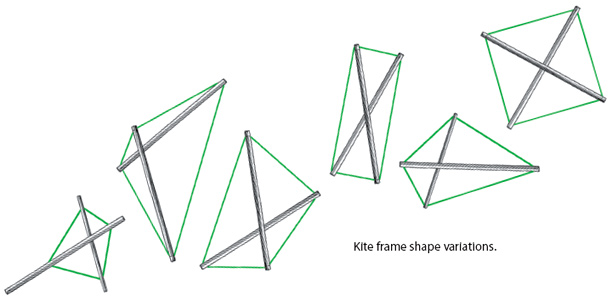The Kite Frame X-Form: Tensegrity's
Primary
|
The simple kite frame, two crossed struts held firmly together by a girth of four tension members, is a human invention and probably thousands of years old. Long before people covered it with paper for use as a flying object to loft in the wind the frame most likely was used as a lightweight pallet, a stretcher for transporting things. Basic as it is, the prestressed kite exits only in the world of people; not as a product of nature. The kite frame can be built in many proportions as shown below. The structural principle remains the same except that the distribution of forces, both tension and compression, vary as the proportions are altered. Always, though, the total of the compression forces pushing out are equal to the sum of the tension forces pulling in. The kite frame is quasi-tensegrity because the two struts, lacking a force in the "z" direction in order to separate, touch and press on one another where they cross. The kite structure is the basic prestressed tension-compression cell for x-module tensegrity structures. The lengths of the four tendons and the lengths of the struts determine the shape. |

The kite frame's tension and compression system. The struts push out (compression)
and the tendons pull in (tension).
